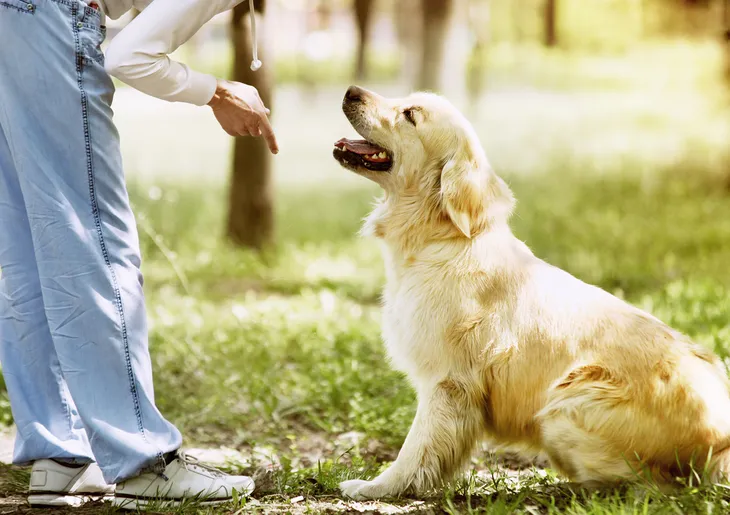Dogs exhibit many behaviors that worry for their owners, but are actually very normal. If you’re a first-time dog owner, or if you’ve recently acquired a new pet that’s a different breed than you’ve owned in the past, you may notice some things that seem unusual. However, chances are these behaviors are perfectly ordinary, and are not indicative of any seriously problematic temperamental or health issues.
Also, keep in mind that every dog has its own individual personality, just as people do. Some of these behaviors are specific to individual dogs, and are not necessarily breed-related.
1. Chewing
It’s well-known that dogs love to chew on things like toys, bones, and even furniture (if you’re unlucky). You may become concerned if your dog seems to gnaw on things constantly or compulsively, but this is actually quite normal, especially for puppies. Young dogs develop sore gums when their teeth come in, and gnawing on whatever is available helps them relieve this discomfort. In other cases, chewing can be an expression of boredom, so if it seems like it’s getting out of control, try expanding your dog’s range of activities.
2. Digging
Digging is one of those dog behaviors that can seem downright mysterious to pet owners. Why is your dog digging a hole when it has nothing to bury?
The answer: chances are your dog is bored.
Digging often serves as a diversion to help an under-stimulated dog pass the time while it waits in the yard for someone to come home and play with it. To address it, engage your dog in active play more often. This is especially important if the digging becomes excessive, or if your dog injures itself while digging.
3. Chasing
Pet guardians with dogs that chase things often become concerned, as there is a high risk of injury associated with this behavior. These risks are especially intense if you let your dog run off-leash in a place where cyclists or cars are passing by.
Chasing is usually explained as a lingering remnant of your dog’s predatory instincts. In the wild, dogs are hunters, and they chase down their prey. Alternately, your dog may chase things as an expression of its breed-related herding instincts. In either case, it is essential that you train your dog to freeze on command, as chasing can lead to serious injuries.
4. Biting
Biting: when is it normal, and when is it a problem?
It is common for puppies to inflict gentle bites on people and other animals when they are teething, or when they are still learning their place in the hierarchy of your household. However, adult dogs that bite inappropriately need to be corrected.
Adult dogs may bite if they feel threatened (especially while injured), or if they are cornered or otherwise targeted by aggressive behavior. However, if your dog acts as the aggressor, or if it bites people or other pets in non-threatening situations, it is likely a temperamental issue that will need to be addressed.
5. Licking
Compulsive licking is another one of those behaviors that seems worrisome and strange to many pet owners. In most cases, dogs that continually lick themselves over and over are doing so because the activity provides relief from an injury or irritation affecting a specific body part. While it’s a normal activity, it’s a good idea to have your vet check this symptom, as any underlying injury should be treated.
Your dog can also develop a condition known as lick granuloma if the licking continues for an extended period of time. A lick granuloma is a toughened lesion that forms on the area being licked, and it can become raw, bloody, and infected.
6. Dragging Rear End on Ground
If you’ve ever seen your pet dash across the floor while dragging its rear end on the ground, you may have had a good laugh. However, this perfectly normal and fairly common pet behavior can indicate bowel discomfort.
Dogs drag their rear ends on the ground to relieve itching in their rear ends, or as a way of triggering the emptying of the glands in their anal region. If this behavior is accompanied by changes in your dog’s bowel habits, or if it becomes habitual, see your vet.
7. Walking in Circles Before Lying Down
Some pet owners worry that this behavior signals confusion, or denotes that your dogs is experiencing some kind of discomfort with its surroundings. However, it is completely normal, and it is another lingering evolutionary remnant from your dog’s ancestral history as a wild animal.
In the wild, dogs have strong survival instincts. Walking around in circles before lying down is something that’s wired into dogs’ brains, as it served as a way for dogs to be sure they were safe from predators before going to sleep.
8. Head-Cocking
Some dogs cock or tilt their heads to one side, especially as a reaction to certain sounds. Pet owners may worry that this behavior signals a hearing problem.
In reality, experts believe that head-cocking or head-tilting means your pet is trying to make sense of something it sensed or heard. It can also show that your dog heard a word or sound it associates with a favorite activity, like eating, playing, or going outside.
9. Separation Anxiety
Dogs afflicted with separation anxiety often engage in problematic behaviors when left alone for extended periods of time. Examples include indoor urinary or bowel accidents, disruptive behavior, barking, howling, and destructive behavior. For instance, you may come home to find your pet has made a terrible mess of the room it was left alone in.
Separation anxiety is natural for dogs, since they are highly social pack animals with a deep-seated need to function as part of a unit. If your pet displays separation anxiety, talk to your vet about ways to treat it. Behavioral interventions and specialized training may be necessary.
10. Barking and Howling
Barking is one of your dog’s primary means of communicating, and it usually signals one of four things: your pet is bored, your pet is confused or alarmed by a particular situation, your pet is frightened, or your pet is not getting what it wants. It is normal for dogs to bark occasionally, but it is almost always a response to a specific stimulus. Barking stops being normal if it is constant, or seems to be directed at nothing.
Constant howling may signal the presence of a problem. Separation anxiety can cause howling, and dogs also howl to attract attention or try to make contact with other dogs. In the latter two cases, it indicates your dog is suffering from a stimulation or socialization deficit.
11. Panting
You may wonder why your dog seems to pant constantly, especially during warm weather. The answer is quite simple: panting serves as a way for your dog to control its body temperature. Dogs expel most of their excess body heat through their mouths when they pant.
However, one thing to be wary of is that dogs also pant as an injury response. If your dog is panting much more than usual and body heat doesn’t seem to be the problem, your pet may have hurt itself and could require treatment.
12. Jumping
Okay, this one might not cause you much concern. However, it is often misunderstood, and it’s important that you know why dogs jump on their owners or other people upon seeing them.
To the untrained eye, it probably looks as though your pet is happy to see you, or is happy to make the acquaintance of a new friend. However, in actuality, your dog is trying to assert its dominance over the person it is jumping on. When you react to this behavior by showing your dog affection, you are actually encouraging it to try to assert its dominance, which can lead to a whole host of other, more problematic behaviors. If your dog is jumpy, it’s a good idea to correct it.















